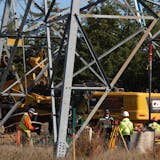Last fall, Carleton College quietly made history.
It became the first Minnesota college to pass the $60,000-a-year mark for tuition, room and board. The elite private school in Northfield has long held the distinction as the state's most expensive undergraduate institution.
Now others aren't far behind. This fall, Macalester, St. Olaf, St. Benedict and Gustavus Adolphus colleges all have landed in the $50,000 range.
As prices reach new heights, private college officials throughout Minnesota worry openly that they're scaring away good prospects. They're working overtime to spread the message that, with all of the financial aid available, their degrees can be "surprisingly affordable," as Carleton says on its website.
"Sticker shock is in play," admits Kirk Carlson, associate dean of admission and financial aid at Gustavus Adolphus College in St. Peter, where this year's room, board and tuition add up to $50,988. "Getting them even to apply … that's the largest hurdle that a lot of us at private colleges see."
Julie Sullivan, president of the University of St. Thomas in St. Paul ($47,525 this year), agreed.
"It's something that's on everyone's mind," she said. "We work very hard to encourage all families to apply, because they really don't know what the cost of attendance is until they get their financial package."
It's a theme that was repeated across Minnesota last week, as colleges held their fall open houses for prospective students.


